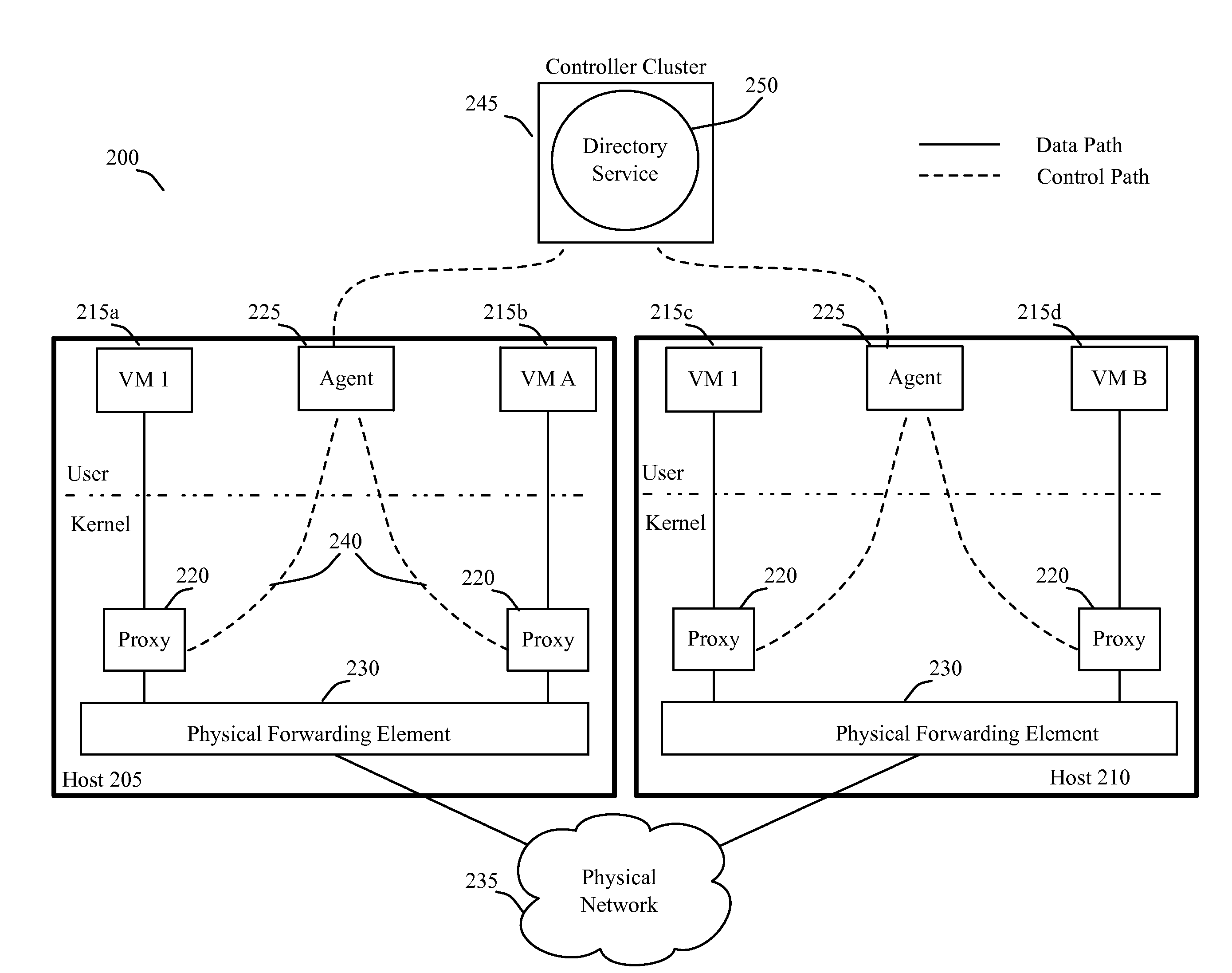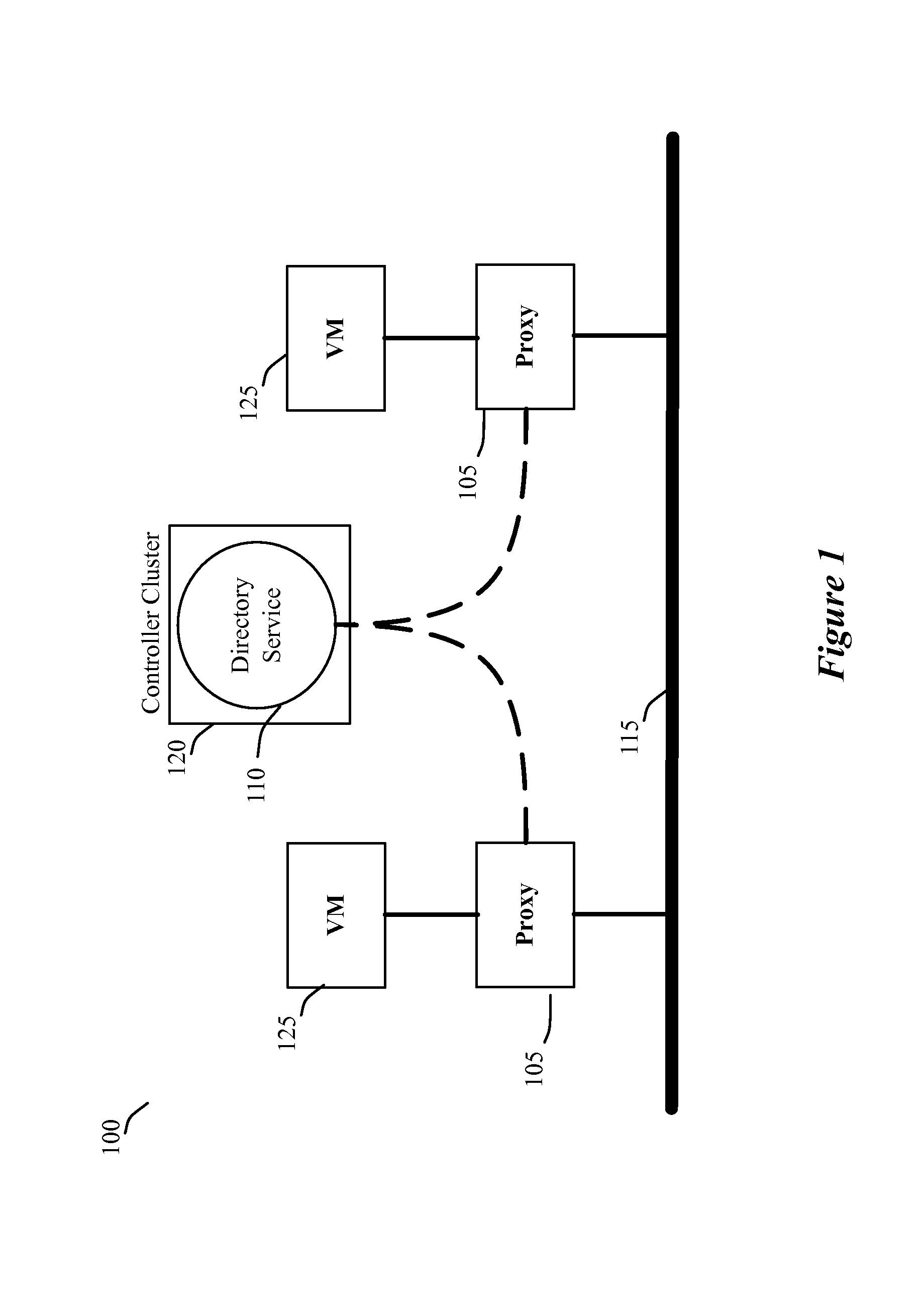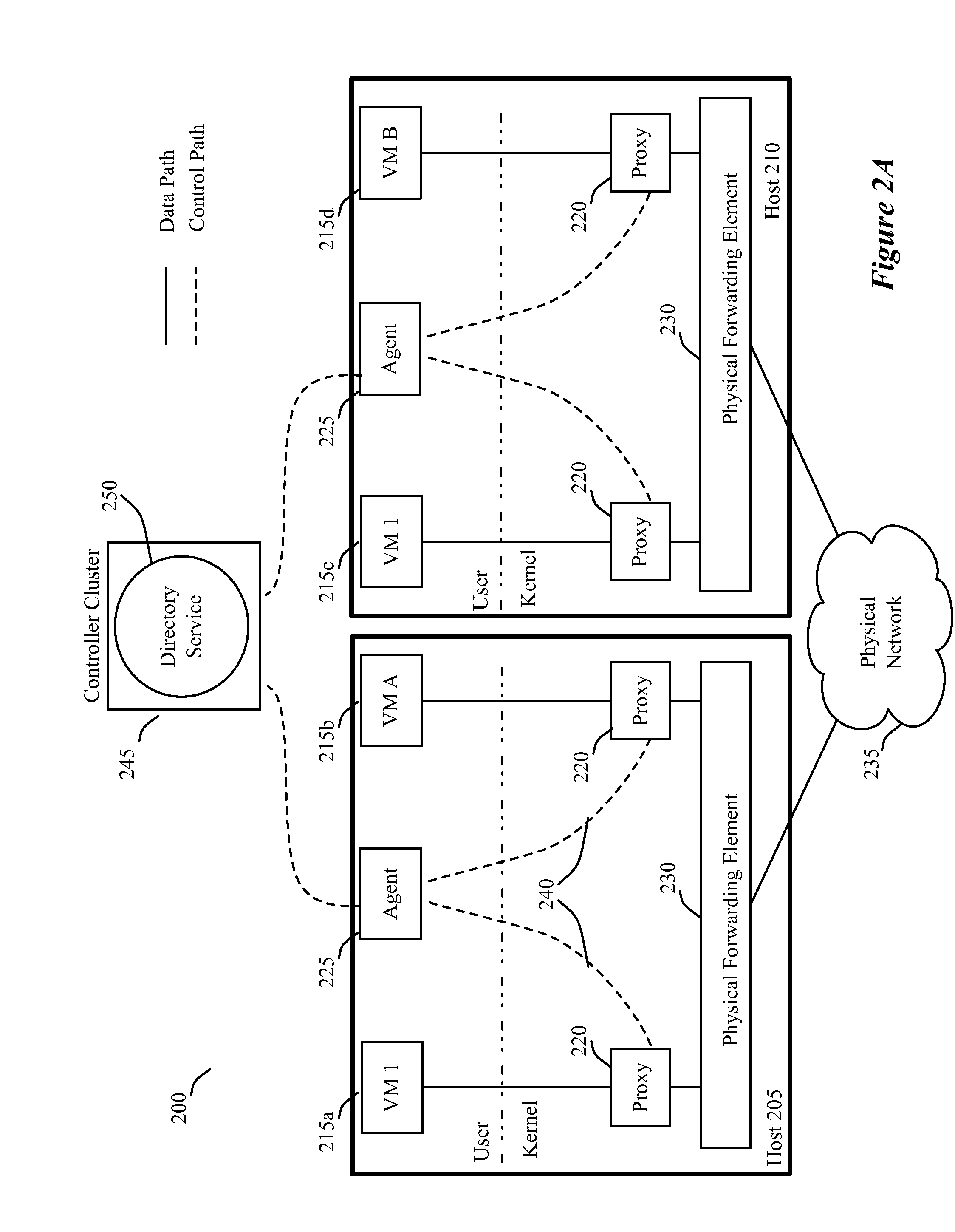Proxy methods for suppressing broadcast traffic in a network
a network and broadcast traffic technology, applied in the field of proxy methods for suppressing broadcast traffic in a network, can solve the problems of scalability and security, prohibitively high arp traffic, and broadcast packets that consume much more resources than unicasts, and achieve the effect of enhancing security
- Summary
- Abstract
- Description
- Claims
- Application Information
AI Technical Summary
Benefits of technology
Problems solved by technology
Method used
Image
Examples
Embodiment Construction
[0031]In the following detailed description of the invention, numerous details, examples, and embodiments of the invention are set forth and described. However, it will be clear and apparent to one skilled in the art that the invention is not limited to the embodiments set forth and that the invention may be practiced without some of the specific details and examples discussed.
[0032]Some embodiments use proxies on host devices to suppress broadcast traffic in a network. Each host in some embodiments executes one or more virtual machines (VMs). In some embodiments, a proxy operates on each host between each VM and the underlying network. For instance, in some of these embodiments, a VM's proxy operates between the VM and a physical forwarding element executing on the VM's host. In some embodiments, the physical forwarding elements of the host devices are software forwarding elements that execute on the host devices to collectively implement different logical forwarding elements (e.g....
PUM
 Login to View More
Login to View More Abstract
Description
Claims
Application Information
 Login to View More
Login to View More - R&D
- Intellectual Property
- Life Sciences
- Materials
- Tech Scout
- Unparalleled Data Quality
- Higher Quality Content
- 60% Fewer Hallucinations
Browse by: Latest US Patents, China's latest patents, Technical Efficacy Thesaurus, Application Domain, Technology Topic, Popular Technical Reports.
© 2025 PatSnap. All rights reserved.Legal|Privacy policy|Modern Slavery Act Transparency Statement|Sitemap|About US| Contact US: help@patsnap.com



